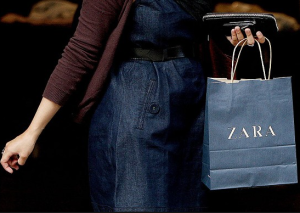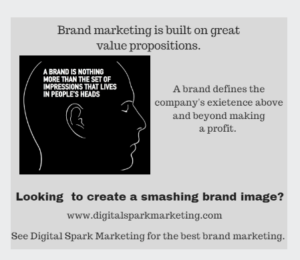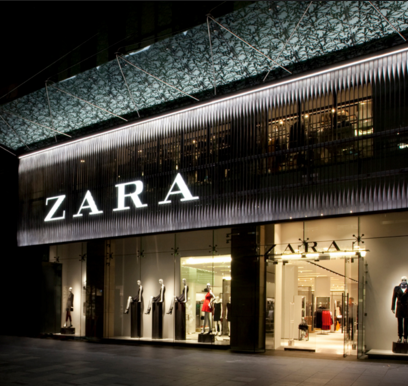Most innovative vision? We are always fascinated by this skill. It is one of the best business skills to have in our view. Does it mean you see everything? Certainly not. It does say that you have the ability to see what many cannot. And then act on these items. It is what made the Zara shopping and innovative fashion retailer in our mind.

Check out our thoughts on building innovation.
That is what makes for the most innovative companies, don’t you agree? Lots of experiments and exploring.
Adaptation doesn’t work well without experimentation and lots of action. And Zara knows how to do this well.
Before we continue, let me ask you a question.
What works best for innovation design in your business? We would love to hear what it was. Would you do us a favor and post it in the comments section below? Be the one who starts a conversation.
With the advent of the Internet, the number of marketing options available to both budding and experienced entrepreneurs has become staggering.
Why may you ask? They certainly have learned to question convention wisdom. Many of us have wandered around their trendy shops or browsed their top-of-the-class website.
Often without knowing very much about the company behind that brand. Some, like me, may have never heard of Zara, until recently. So, what makes this Spanish brand so impressive?
Let’s examine this attractive retail giant.
About Zara
Zara is a Spanish clothing and accessories retailer based in Arteixo, Galicia, Spain and founded in 1975. There are over 2,000 Zara stores located across 88 countries, including 51 in the United States as of July 2014.
Zara stores are company-owned, except where local legislation forbids foreigner-owned businesses. In those cases, Zara franchises the stores.

What makes Zara the most innovative fashion retailer?
It is claimed that Zara needs just two weeks to develop a new product and get it to stores. This is compared to the six-month industry average.
Zara launches around 10,000 new designs each year. That is an amazing statistic, isn’t it?
Zara has resisted the industry-wide trend towards transferring fast fashion production to low-cost countries.
Perhaps it’s most unusual strategy was its policy of zero advertising. What is behind this strategy? It was simple. The company preferred to invest a percentage of revenues in opening new stores instead.
During the 1980s, Zara started changing the design, manufacturing, and distribution process to reduce lead times. This allowed them to react to new trends in a quicker way, in what they called “instant fashions.”
The company based its improvements on the use of information technologies and using groups of designers instead of individuals. Most of their process secrets are in this area.
Zara offers considerably more products than similar companies. It produces about 11,000 distinct items annually compared with 2,000 to 4,000 items for its key competitors.
The company can design a new product and have finished goods in its stores in four to five weeks. It can modify existing items in as little as two weeks. That is amazing, isn’t it?
Shortening the product life cycle means greater success in meeting consumer preferences. If a design doesn’t sell well within a week, it is withdrawn from shops; further orders are canceled, and a new model is pursued. What a great feedback loop.
Zara has a range of basic designs that are carried over from year to year. However, some fashion forward designs can stay on the shelves less than four weeks.
This encourages Zara customers to make repeat visits. An average high-street store in Spain expects customers to visit three times a year. That goes up to 17 times for Zara. What a difference, eh?
Zara owes none of its success to advertising. That’s because they doesn’t advertise. It hardly even has a marketing department, and it doesn’t engage in flashy campaigns, as its competitors do.
Competitors do lots of teaming up with fashion designers like Stella McCartney, Karl Lagerfeld, Martin Margiela and Marni. Zara’s designers are completely anonymous.
Some would say this is because they are copiers rather than designers. With their success, does it matter?
They don’t spend money on commercials because they are spreading their ‘brand’ with verbal communication between customers and with their label only on their bags.
Also most amazing to me. Can you name one other retailer that does this?
It is essential that Zara has the possibility to quickly respond to market demands. They have innovative manufacturing process, which allows them to be quick in responding and sending clothes to their shops, and they also do some re-designing in that time.
Only 15-25% of clothes are produced before the season and 50-60% at the start of the season. All other clothes are manufactured during the season according to customer wishes ( a design which has no good response is withdrawn).
While I am not an expert in fashion design, that is most amazing to me. Very customer responsive.
Zara design team is producing 18,000 different models of clothes; that’s about 70 every working day in a continuous process. The Zara Inditex group has more than 5500 stores in 82 countries and employs more than 110,000 people.
Their product reaches customers in just four weeks. It is amazing that whole idea process is just four weeks long. Think about that fact … 4 weeks.
Zara’s process innovation makes this company fast and market-responsive. It is more than enough to keep their top position among fashion brands.

Zara shopping … growth strategy success
In 1980, the company started its international expansion through Porto, Portugal. In 1989 it entered the United States, and in 1990, France. This international expansion was increased in the 1990s, with Mexico (1992), Greece (1994), Belgium and Sweden (1994), etc. until reaching its current presence in over 88 countries.
In the last five years, Zara’s overall sales have grown to 13.8 billion euros a year from 9.4 billion euros. Profit has risen to almost 2 billion euros a year.
The company expanded to 110,000 employees in 2011, from around 80,000 in 2007. Remember, while Spain has been suffering through real estate and debt crises (following the global financial crisis), Zara has prospered.
Zara New York,NY … innovation secrets
Every day, store managers report customer feedback information to headquarters. It is then transmitted to a large team of in-house designers. They quickly develop new designs and send them to factories to be turned into clothes.
Zara said that is because the customer is always determining production, not the other way around. An interesting thought isn’t it?
Every piece of clothing the company makes has, in a way, been requested. A business model that is so closely attuned to the customer does not share the cycle of a financial crisis.
Zara is one of greatest examples of process innovation. The founder, Armancio Ortega started his business in the year 1975 as a single store in La Coruña (Spain). Ortega, once a tailor’s assistant, learned the value of controlling all steps of the production and distribution process.
Later he applied it all to the Zara chain. And started refining the process steps based on this critical concept.
Key takeaways
Zara, I believe, is the most innovative fashion retailer in the global economy. This is within an industry built around constant design innovation and change. Why may you ask?
We believe there several good reasons. First, as one of the originators of customer responsiveness, they have some great process secrets. They are built on a foundation of new ideas and constant introduction of new products.
Second, they know their future is based on those ideas. They also know how to do new things well, and they must be good at trying new ideas in many areas as experiments.
These tests, they realize, will not all work as planned, and some percentage will fail. They know and accept this without worry.
Innovation is extremely essential to any organization, especially in today’s hyper-competitive business market. The successful exploitation of new ideas is critical to a business’s ability to improve its processes, bring new and improved products and services to the market, increase its overall efficiency and productivity, and, most importantly, improve its profitability.
So if you want to find a truly great innovator, don’t look for the ones that make the biggest headlines are that are most inspiring on stage. Look for those who spend their time a bit off to the side, sharing ideas, supporting others, and quietly pursuing a path that few others are even aware of.

